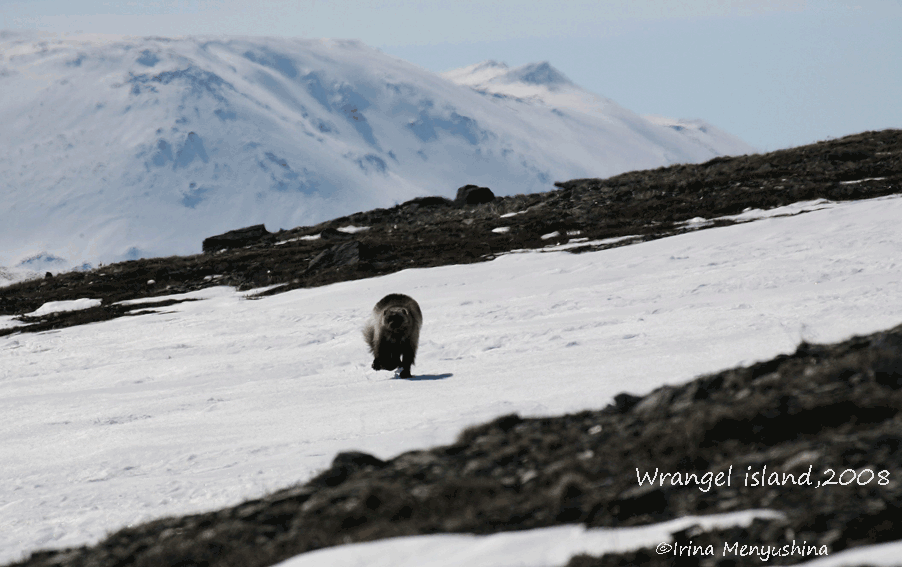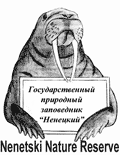
An International Polar Year initiative to use predators as indicators of arctic changes
| |
| Home |
| Project Structure |
| The team |
| Field sites |
| Publications |
| Isotopes |
| News |
| Workshops |
![]()
NEWS AND ANNOUNCEMENTS SUMMER 2008 see also SPRING 2008 / SUMMER 2007
Mosquito, rough-legged buzzard and Co By Gunnhild & Anna
The field season in Nenetskij lasted from the 18th of June until the 18th of August. Anna Kosorukova and Gunhild Skogstad from the Arctic Predators project and Alexander Gatilov, a field assistant form Moscow, stayed for the whole period, whereas Rolf Ims and Eva Fuglei joined us for three weeks in July.
In Korovinskaya, there were several arctic fox dens with recent signs of activity, but only one den with documented reproduction. At this den, five cups were observed and two cameras worked for a long time. No signs of red foxes were registered; even Rolf did not see them ;-)
The relatively low breeding intensity in predators this year reflected the low number of lemmings. The predation pressure on ptarmigan seemed to be high, as we regularly observed predated adult birds or eggs, and the eggs from artificial nests on the open tundra disappeared almost immediately. The prey remains from buzzard nests was dominated by root voles, young hares and ptarmigans, but occasionally we found collared lemmings and other birds of prey.
Lena Delta 2008, a report from Vladimir Pozdnyakov
Average temperature in June was close to the long-term average: 4.1°C compared to 4.0°C. The first decade of June was, however, cold with an average temperature 3.2°C below the long-term average. In the evening of the 2 of June, rain together with a rapid temperature fall caused freezing of the tundra. Every grass-blade was covered with a layer of ice. In the southern part of the Delta there was a layer of up to 3 cm of ice on cables. According to the meteorological service in Tiksi, icing was observed in all meteorological stations in the tundra and the forest tundra zone of Yakutia, and persisted until 6 of June. The Lena Delta was again completely covered by snow. On 2 and 3 of June, there was 10.0-14.5 mm of precipitations. Until 9 of June, there was moderate snow fall every day. On 10 of June, snow cover was again 100% even in the southern part of the Delta. The average daily temperatures became positive only on 12 June, 6 days later than average. Average daily temperatures increased rapidly from -1.2°C on 11 June to 5.9°C on 12 of June. Due to such an abrupt warming, snow melted rapidly. The second half of June was rather warm. However, on 30 of June and 1 of July, there was a new cold spell with wind up to 30m/s and snow fall. In the northern part of the Delta, all higher objects such as buildings, barrels, drift wood or hummocks were covered with wet snow. The small ponds in the polygon tundra were full of wet snow and froze during the night. July was relatively cold, rainy and windy. On 28-29 of July there was a new snow fall.
Lemming numbers were low for the third consecutive year. This year, however, we noticed a tendency for an increase in lemming abundance. Lemmings were trapped from the 13 of June to the 26 of July (603 trap-nights) and 18 animals were caught. In the beginning of June, when ice covered the inundated low laying tundra parts, we observed drowned lemmings under the ice layer. On the mainland tundra and in the mountains bordering the southern part of the Delta, the density of narrow skulled voles (Microtus gregalis) was very high, much higher that in the previous year. On 13-14 of June and 17-26 of July we caught 69 voles during 427 trap-nights. Arctic fox breeding was not recorded this year. At the same time, arctic foxes were more numerous than last year. Adult animals wandering around were observed regularly in all parts of the Delta in June and July. Apparently the foxes were attracted to the Delta by the early snow melt and the high vole density on the adjacent territories. In the beginning of June we observed a fox which came from the sea-ice onto the mainland tundra in the south-east of the Delta. Similarly as in the previous year, foxes had a strong impact on nesting birds. They destroyed most nests on the larger islands. Pomarine skuas (Stercorarius pomarinus) were numerous during spring migration and remained numerous until the beginning of July, but did not breed. They were more abundant in the southern part of the Delta, which is adjacent to the mainland tundra, than in the central and the northern parts. Arctic skua (Stercorarius parasiticus) numbers were similar to the previous year. The only nesting skuas were long-tailed skuas (Stercorarius longicaudus) in the mainland tundra to the south and south-east of the Delta. They did not nest on the islands of the Delta. In the beginning of July we observed rather large groups of nomadic long-tailed skuas (up to 40 individuals) in the inner parts of the Delta. There were no snowy owls (Bubo scandiaca) in the Delta this summer. As in the previous year, rough-legged buzzards (Buteo lagopus) were nesting only in the southern part of the Delta on the stony escarpments of the Primorski Kryazh and Tuora-Sis ridges, which are close to the river, as well as on the high river banks of islands which are remains from the old coastal plain. The climatic conditions during the breeding season 2008 were unfavourable for birds, despite the fact that arrival was early due to the early onset of spring. All typical birds of the region were present in the Delta in the end of May, even Ross’s gulls. The subsequent drop in temperature and icing, as well as the inundation of feeding places, caused high mortality for waders and small passerines. We found dead grey plovers (Pluvialis squatarola), golden plovers (Pluvialis fulva) and lapland buntings (Calcarius lapponicus). Mortality of birds was high in all of northern Yakutia. Colleagues working in the valley of the River Yana at 69°N sent us dead ruffs (Philomachus pugnax), a golden plover, a curlew sandpiper (Calidris ferruginea) and a read-breasted pipit (Antus cervinus). As a result of the weather conditions, in the Lena Delta most birds began to nest only in the second decade of June, after the ice and snow cover disappeared. All wader species and the small passerines were breeding in low numbers. We found only 8 nests of little stint (Calidris minuta), 6 nests of turn-stones (Arenaria interpes), 3 nests of temminck stints (Calidris temminckii), 3 nests of red phalaropes (Phalaropus fulicarius) and 1 nest of curlew sandpiper (Calidris ferruginea). Ross’s gulls (Rodostethia rosea), Sabine’s gulls (Xema sabini) and arctic terns (Stera paradisaea) were not nesting on the small sandy islands in the channels of the Delta, which were inundated for quite a long time. Breeding numbers of brent geese (Branta bernicla) and king eiders (Somateria spectabilis) were lower than in the previous year. Only a few Steller’s Eiders were nesting. Predation rate from foxes and pomarine skuas was high. As in the previous year, breeding success was highest for eiders nesting close to colonies of brent geese on small islands, which were inaccessible for arctic foxes. On the larger islands breeding success of Steller’s eiders in their typical habitat (polygonal tundra-bogs) was close to zero. Also most nests of king eiders, willow ptarmigans (Lagopus lagopus) and white-fronted geese (Anser albifrons) found in these habitats were predated. Among the waders nests we found (see above) 3 nests of little stint and one nest of red phalarope were predated.
A cold and wet 2008 summer in Wrangel Island By Irina Menyushina
Field work was carried out from April 28 through September 15, 2008. Our main base camp was at Verkhnaya Neizvestnaya (Upper reaches of Neizvestnaya River), at the model Plot “Verkhnaya Neizvestnaya” in the very center of Wrangel island (71˚ 12, 94’ N / 179˚ 19,24 W).
Food resource condition
Condition of food resources for myophagous predators did now support their successful breeding. In the diet of breeding snowy owls 85% of samples were lemmings. Among alternative food we found snow geese, common eider, eider eggs, chicks of long-tailed skuas, snow buntings and waders.
Snowy owl
All sex and age classes were represented in the owl population on the island in 2008. Males were prevalent in the model plot where the proportion of sexes was 1 F:1.7 M (n=16). In other areas males prevailed also, except in the Tundra of Academy during the period of snow geese molting, where females prevailed. Data on the sex-age composition of the owl population in different areas of the island and proportion of sexes within owl litters were collected. The majority of owls on the island attempted breeding, but many of them failed at the very beginning of the season. Therefore, the proportion of breeding owls was determined only within the model plot, were permanent observations throughout the season were carried out. Owl nesting densities at the model plot were below average with 0.16 nest/km2. In other parts of the island densities were even lower. Altogether, data for 33 breeding pairs were collected on the island in 2008. Mean clutch size was 6.20 (range: 3-9; n=15). Hard weather conditions and low lemming numbers were the reason for very low breeding success in owls. Many nests were abandoned during the snow storm in the first days of June. Litter size on wing was from 1 to 2 chicks. Mortality of adult owls was not observed in 2008.
Numbers of arctic foxes on the island in 2008 were low in all areas of the island. A track survey during snow time in spring showed that the majority of foxes were leaving the island and returned to the breeding territories only in the second part of May. Probably, this was due to very low lemming numbers and their inaccessibility because of icing. At the model plot the maximal fox density was 0.13 pairs/km2. At the model plot only half of the fox pairs were breeding. The majority of these foxes gave birth outside dens (perhaps due to predation from wolves and wolverines that were visiting arctic fox dens). This shift created new complications in identifying fox breeding status and litter size. A total of 51 arctic fox dens were examined, tracks of wolf and wolverine visiting fox dens were recorded at 18 dens. On 17-20 breeding territories foxes were breeding.
Long-tailed skuas |
||||||||||||
Female wolverine on the move
|
||||||||||||
|
||||||||||||
![]()
RUSSIAN ACADEMY OF SCIENCE |
||

|
|
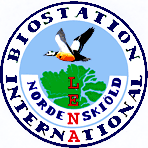 |
IPY-Arctic Predators project
Department of Biology, University of Tromsø and Norwegian Polar Institute N-9037 Tromsø, Norway
Phone: +47 77 64 62 72
© 2007
ARCTIC PREDATORS
- Website design by Nicolas Lecomte
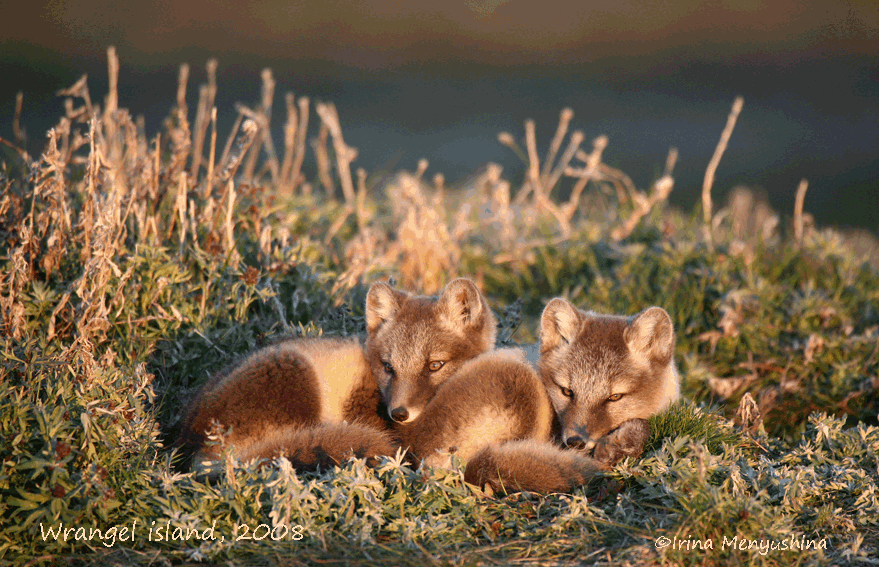
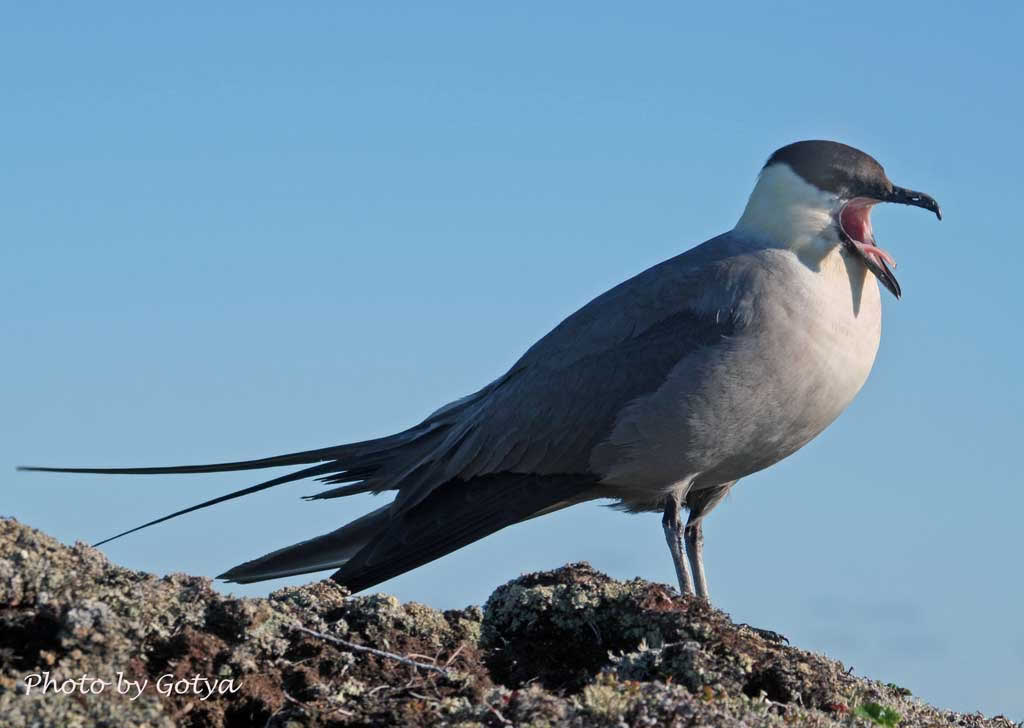
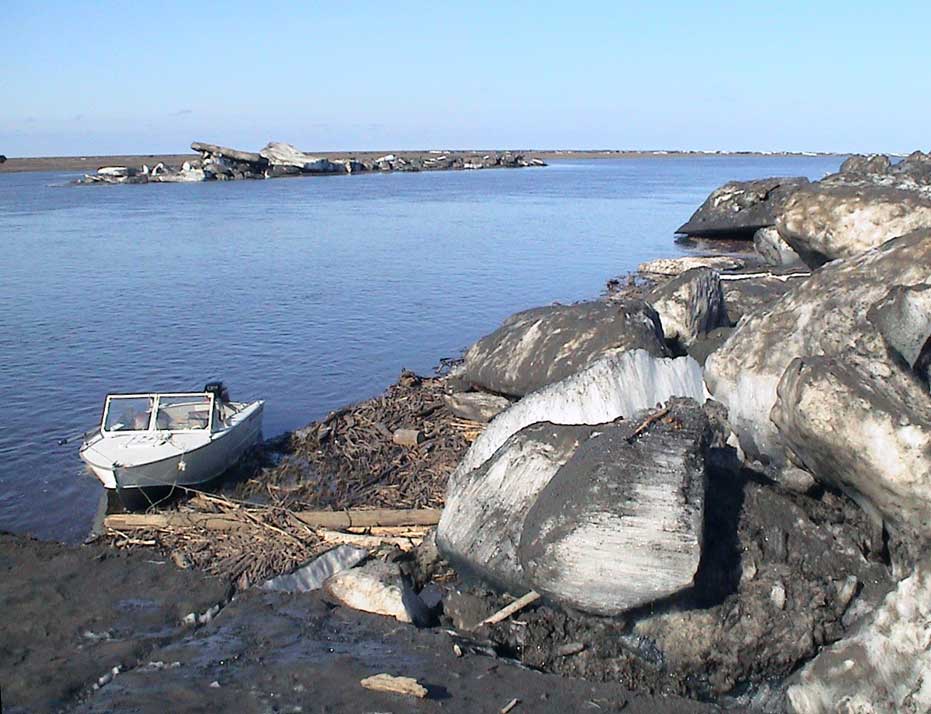
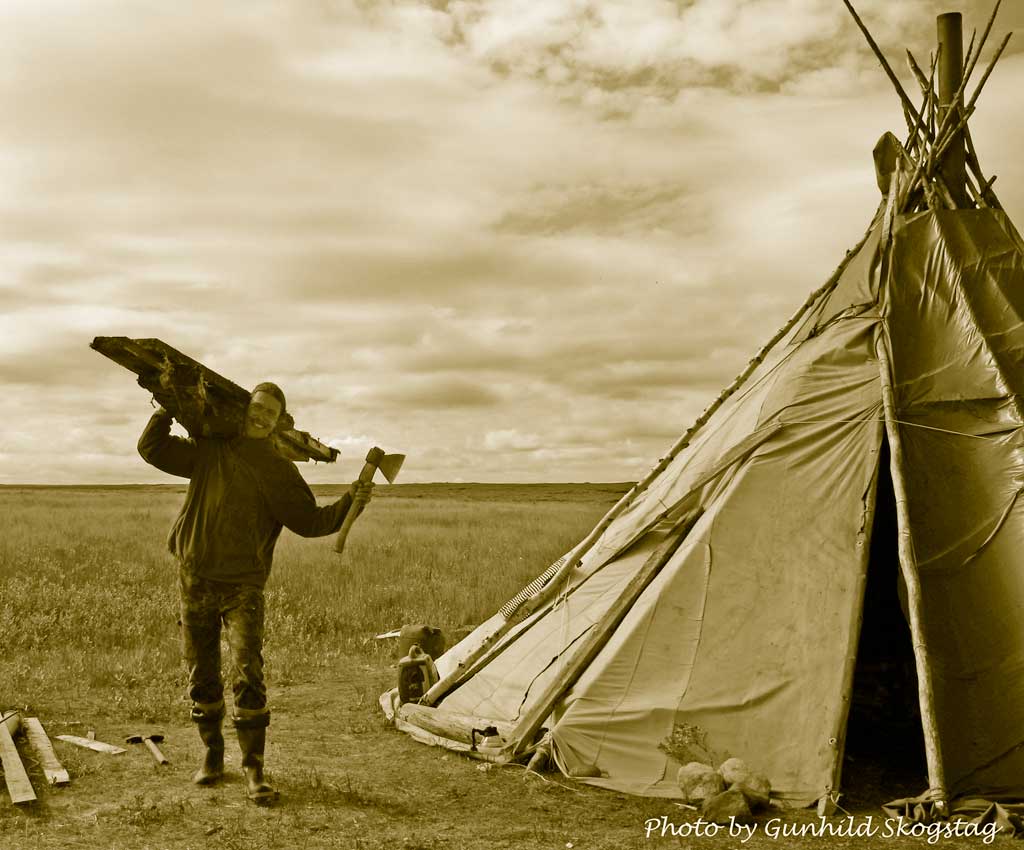 The main effort was laid to Korovinskaya Bay, to the 36 grids from last year and the area around, which was searched for fox dens and raptor nests.
The main effort was laid to Korovinskaya Bay, to the 36 grids from last year and the area around, which was searched for fox dens and raptor nests. 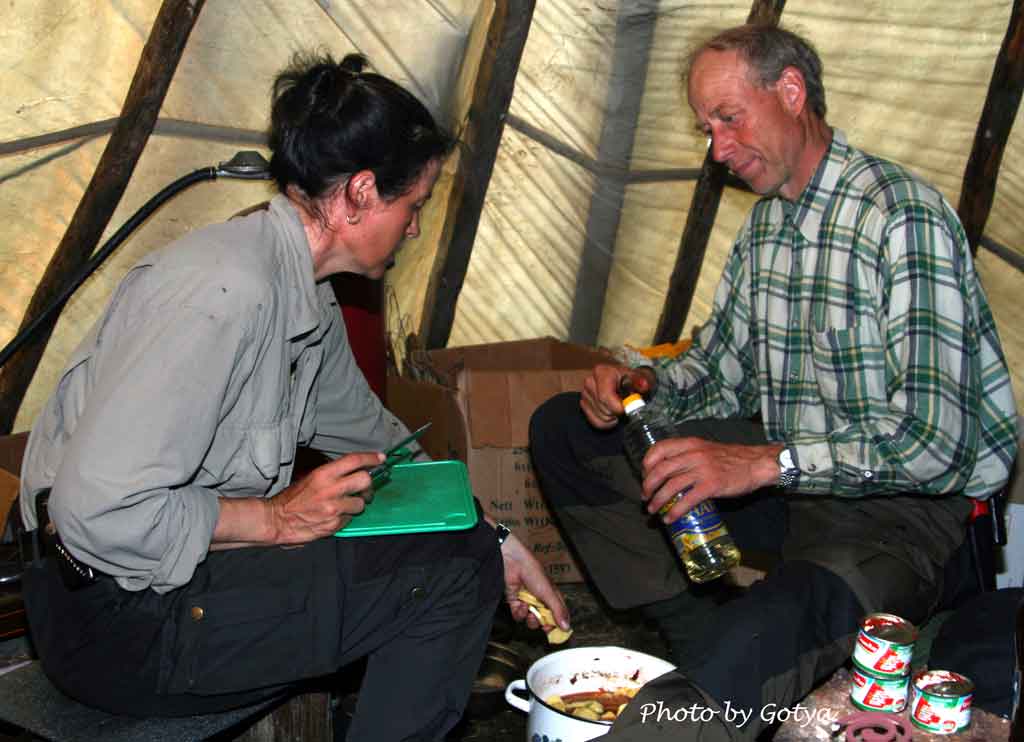 Two trips were made to Lovetsky Island, one in mid July and one in August. Due to late snowmelt the work on the grids had to wait until the end of June, so the mustelid tunnel- and artificial egg experiments could go on for about six weeks. During the whole season, we actively collected samples for stable isotope analysis, with a special effort on predators. Overall, we had a good field season, much due to Alexander’s expertise on building a comfortable camp site out of practically nothing, on fish conservation and on general tundra life. Also the workers from Nenetsky Zapovednik were very important for both practical and social reasons. They provided us with a Nenets chym at the camp site, and several times with boat transport to Kos Nos and Lovetsky Island, where they welcomed us with delicious food, a hot sauna and great company.
Two trips were made to Lovetsky Island, one in mid July and one in August. Due to late snowmelt the work on the grids had to wait until the end of June, so the mustelid tunnel- and artificial egg experiments could go on for about six weeks. During the whole season, we actively collected samples for stable isotope analysis, with a special effort on predators. Overall, we had a good field season, much due to Alexander’s expertise on building a comfortable camp site out of practically nothing, on fish conservation and on general tundra life. Also the workers from Nenetsky Zapovednik were very important for both practical and social reasons. They provided us with a Nenets chym at the camp site, and several times with boat transport to Kos Nos and Lovetsky Island, where they welcomed us with delicious food, a hot sauna and great company. 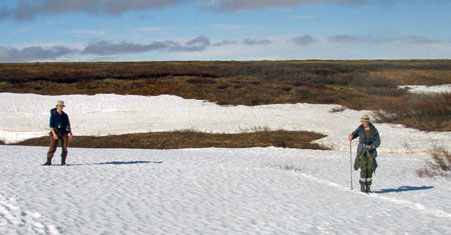 Lemming winter nest counts showed low lemming abundance during winter, although
Lemming winter nest counts showed low lemming abundance during winter, although we recorded many winter rodent tracks on our willow grids. Hares and willow ptarmigan were abundant, and both seemed to succeed in reproduction this year. Reindeer were observed regularly in our core area, but the large herd only migrated through the area a few times in August.
we recorded many winter rodent tracks on our willow grids. Hares and willow ptarmigan were abundant, and both seemed to succeed in reproduction this year. Reindeer were observed regularly in our core area, but the large herd only migrated through the area a few times in August.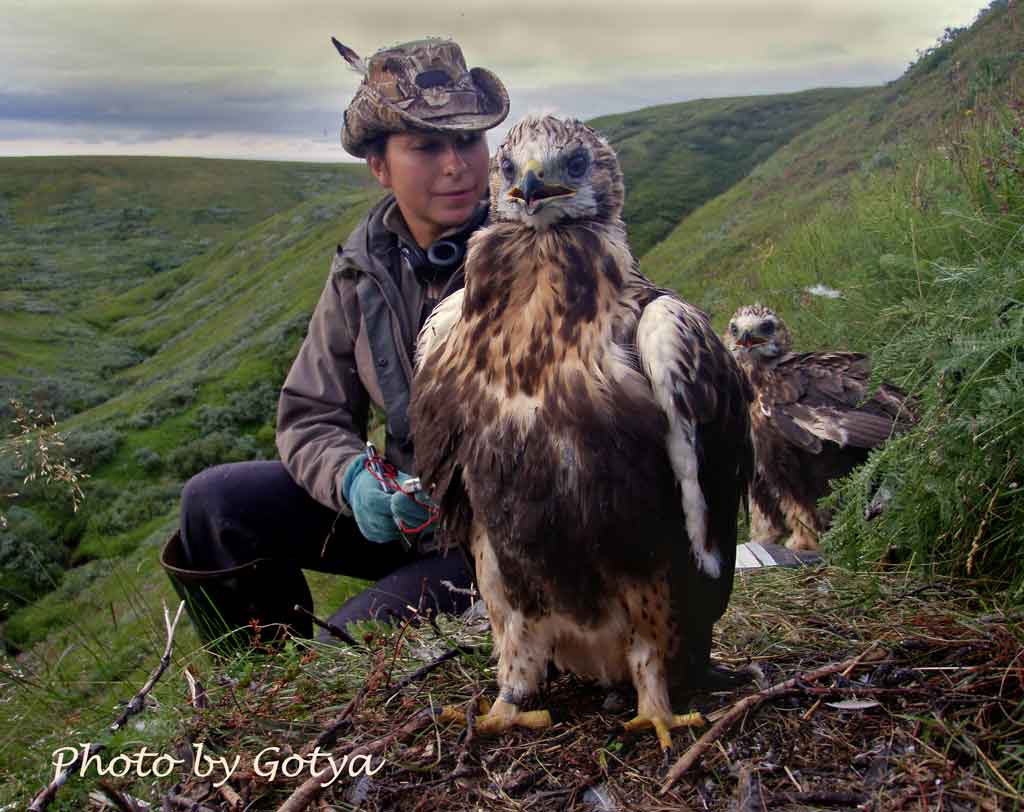 Ten nests of rough legged buzzard were found and visited regularly. On four of these, we placed cameras. Three nests failed or were abandoned during the season, and the chick number varied between one and four. We observed peregrine falcon sporadically, and two nests with chicks were found. During the first weeks of the summer, we observed several arctic and long-tailed skuas every day, but, by the end, only a few breeding pairs remained. Two nest of long-tailed skua were found, of which one succeeded. Also two nests, both successful, of arctic skua were documented in the core area. In August, a snowy owl was observed near the camp site three times.
Ten nests of rough legged buzzard were found and visited regularly. On four of these, we placed cameras. Three nests failed or were abandoned during the season, and the chick number varied between one and four. We observed peregrine falcon sporadically, and two nests with chicks were found. During the first weeks of the summer, we observed several arctic and long-tailed skuas every day, but, by the end, only a few breeding pairs remained. Two nest of long-tailed skua were found, of which one succeeded. Also two nests, both successful, of arctic skua were documented in the core area. In August, a snowy owl was observed near the camp site three times. 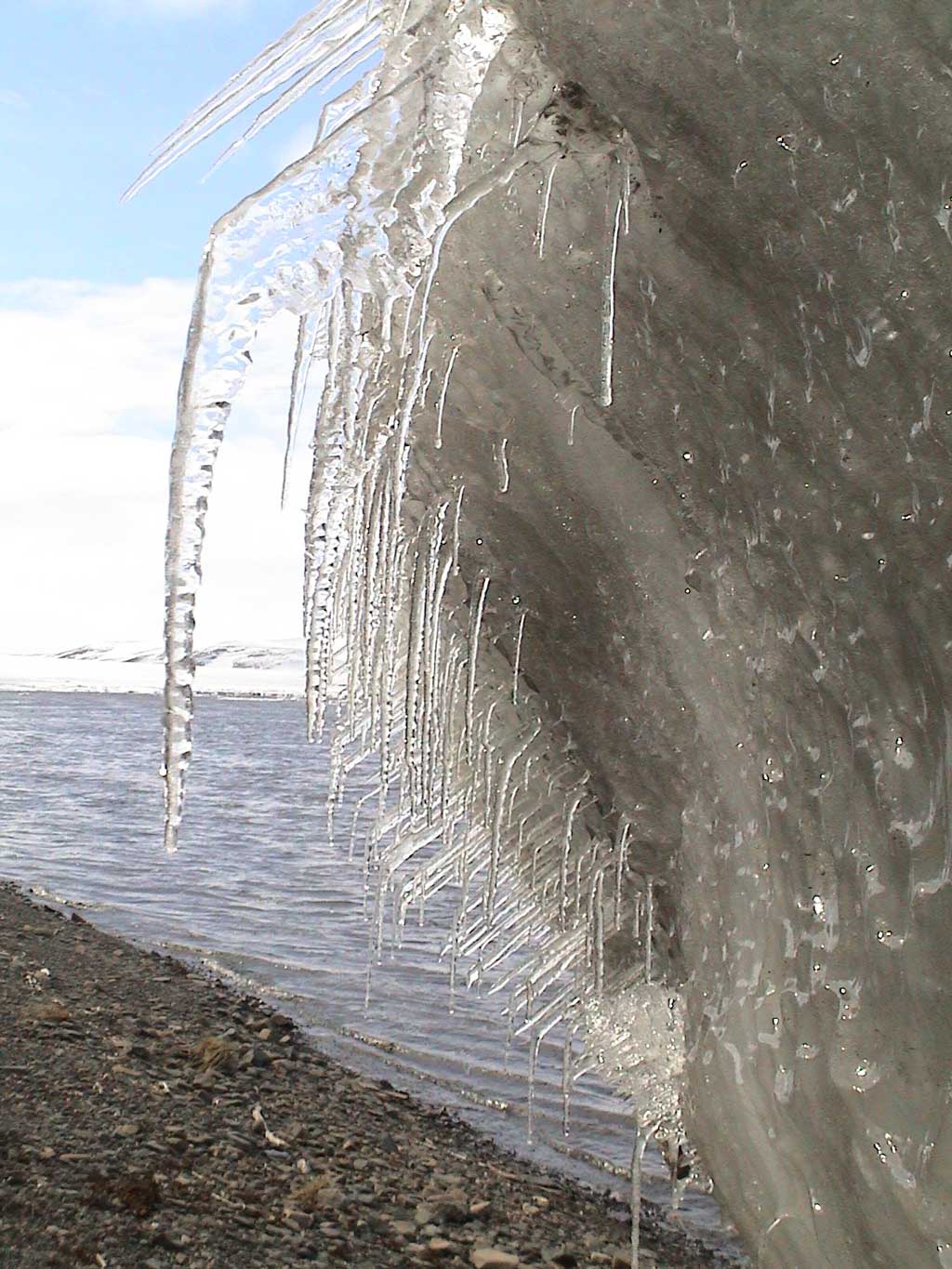
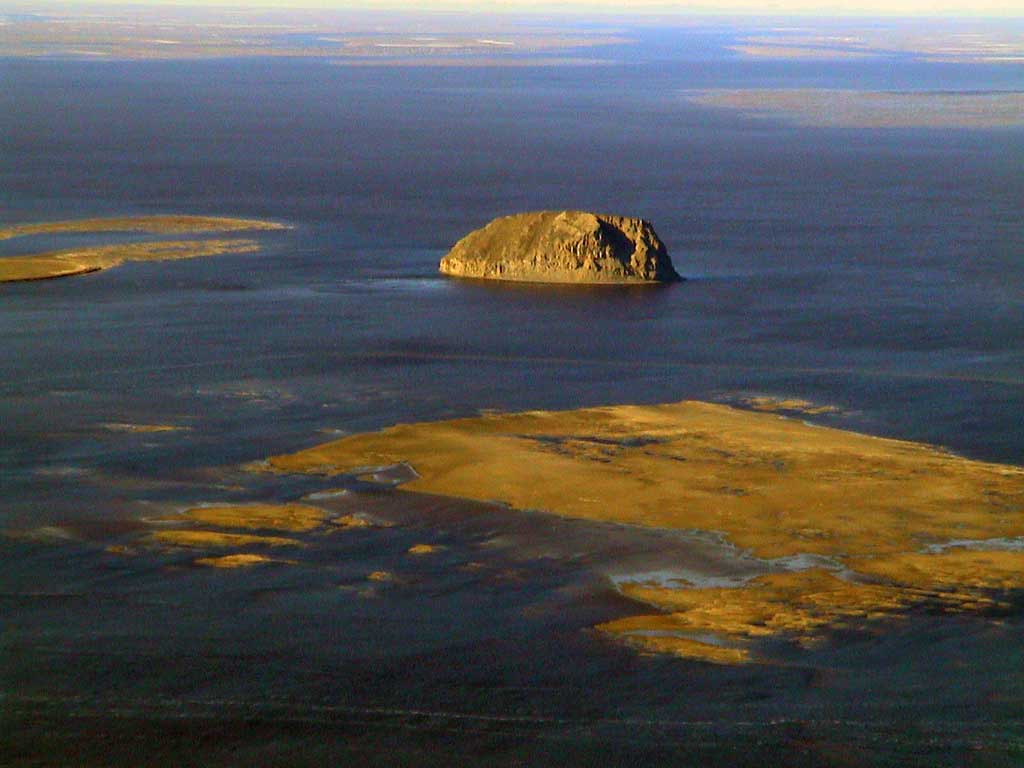 Because of the early warm period and snow melt, the ice broke up in the Lena Delta 9-10 days earlier than usual. In the southern part of the Delta the ice broke up 31 of May. The water rose to very high levels, higher than the historical maximum of 41cm. All low laying parts of the islands were inundated, and when the temperature dropped, an ice layer of 5-7cm formed. This ice remained on the ground after the water level had dropped. On 10 of June all channels of the Delta were free of ice.
Because of the early warm period and snow melt, the ice broke up in the Lena Delta 9-10 days earlier than usual. In the southern part of the Delta the ice broke up 31 of May. The water rose to very high levels, higher than the historical maximum of 41cm. All low laying parts of the islands were inundated, and when the temperature dropped, an ice layer of 5-7cm formed. This ice remained on the ground after the water level had dropped. On 10 of June all channels of the Delta were free of ice. 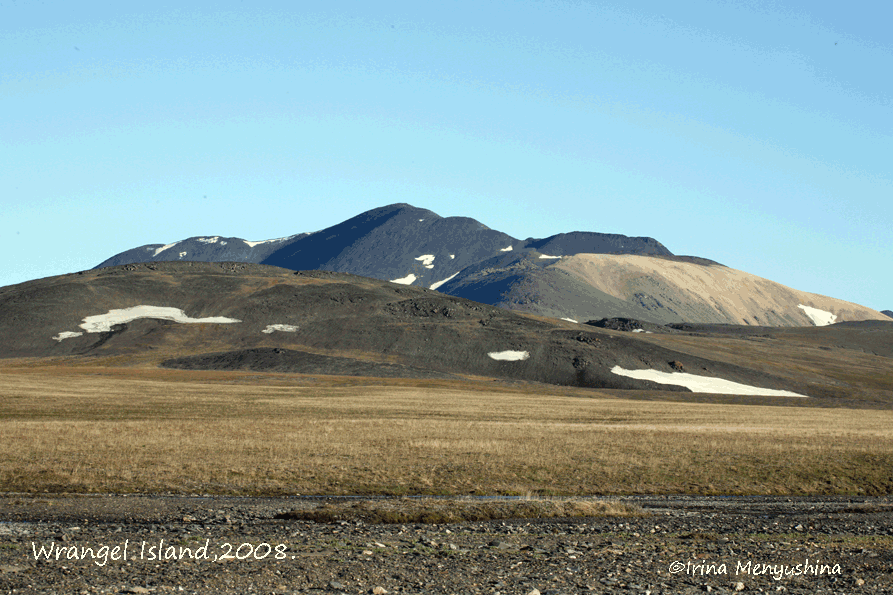
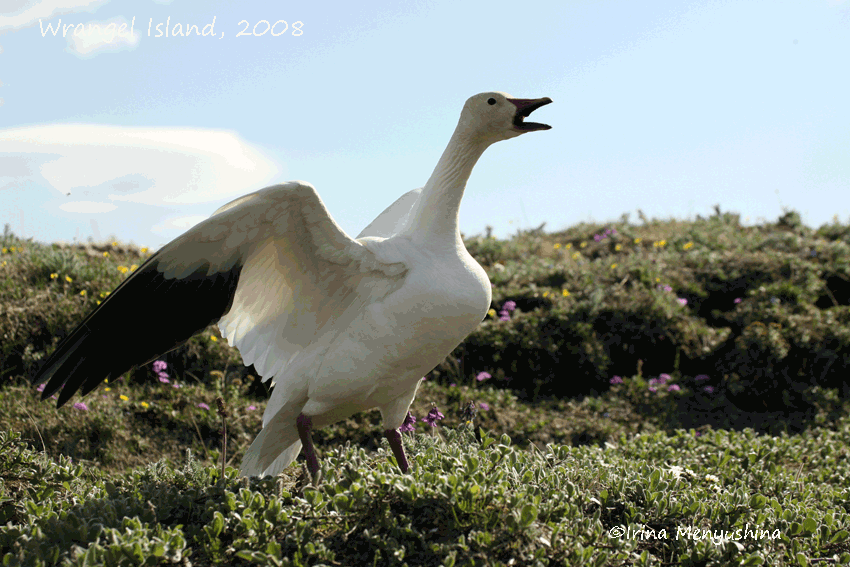
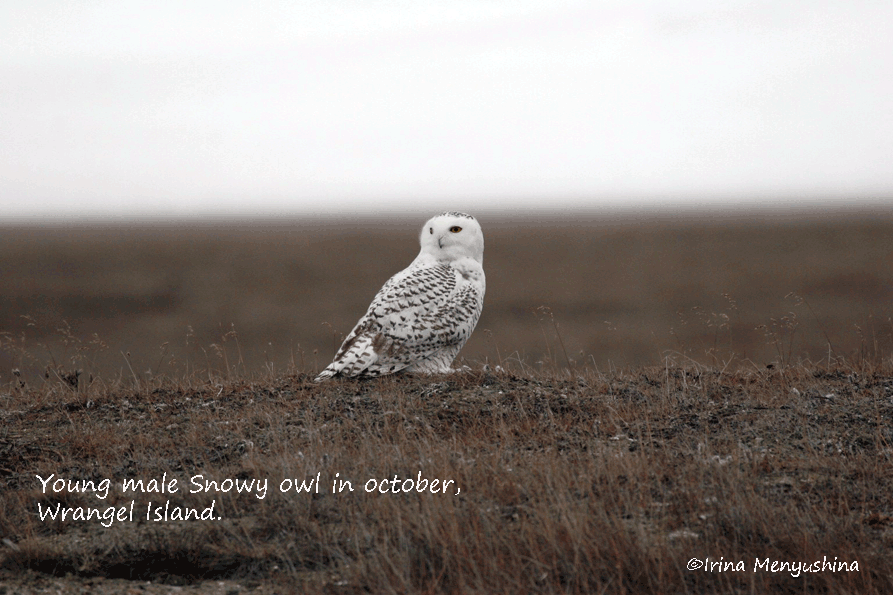
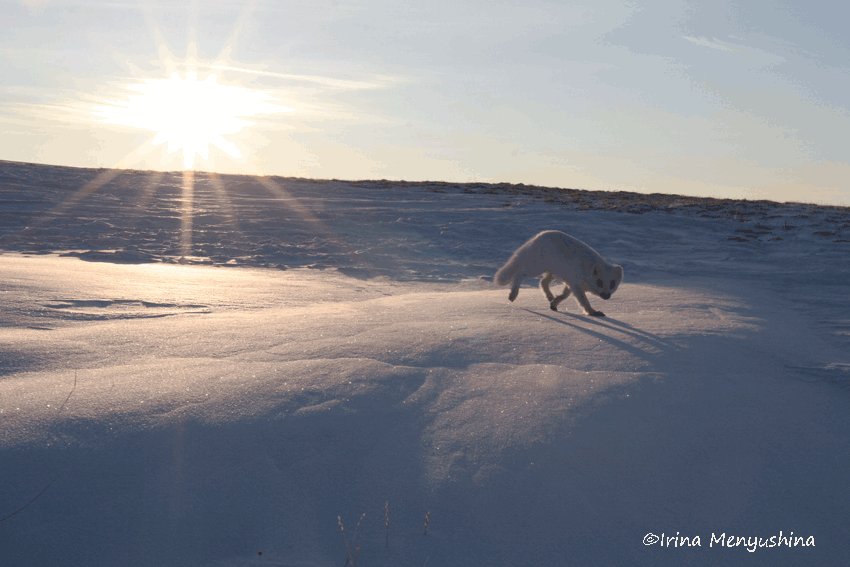 Arctic fox
Arctic fox
